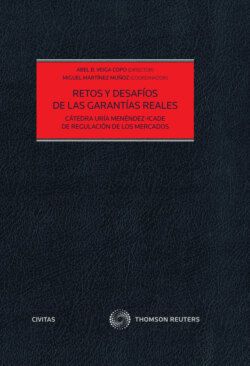Читать книгу Retos y desafíos de las garantías reales - Abel B. Veiga Copo - Страница 77
На сайте Литреса книга снята с продажи.
1.2.1. Fellow states
ОглавлениеThe Paris Club22 was instituted in 1956 as an informal gathering of representatives of the typical lender states in order to discuss possibilities of debt reduction for states which encountered difficulties in meeting their repayment obligations. Those meetings which started at the seat of the French Secretary of State, at the Quai d’Orsay in Paris (hence the name of the “Club”) take place on an ad hoc basis. As indicated, lenders and creditors here are states and are, therefore, in theory (sovereignty) on equal footing; accordingly, lending and borrowing among states traces back deeply into history. However, in practice it was often recognized in such a debt relationship and clearer than in its private law-counterparts that there is a power game going on between lender and borrower23. The second president of the U.S.A., John Adams (1797–1801) is quoted as having said: “There are two ways to enslave a country. One is by the sword, the other is by debt”.
From all the implications coming along with such a statement only one aspect shall be addressed here – namely the question whether or not it is legally justified to speak about a credit relationship under these circumstances24.
This seems to be a stupid question given that all the relevant treaties are coined as “loans”, that all formalities of a loan agreement are fulfilled (at least usually), or that UNCTAD has given some guidance under the heading of “responsible sovereign lending and borrowing”25. And yet, irrespective of all indication pointing towards loans, from the perspective of private law dogmatics it is dubitable whether this is the right heading. After all, at least the German Civil Law Code (Bürgerliches Gesetzbuch, BGB) in its sections 133, 157, 242 permits or even obliges the lawyer to see the real substance of a contract and to treat it accordingly. When looking at John Adams’ statement, when remembering Russia’s offer to Greece of monetary support in 2010, or when just examining a loan that was given (one out of many similar to other African countries) to Nigeria by China26, one cannot but conclude that these contracts or treaties are actually a kind of atypical purchase agreement by which the consideration for the money lent is either receiving political influence27, a preferred access to commodities such as oil or some other manifest advantage. The peculiarity of a private law loan contract, namely to give money in order to receive it back at a later point of time plus interest does play little if any role in the political arena. China, for instance, is certainly not pursuing the business to lend money to African and other states in order to earn additional income through the respective interest28.
For an insolvency lawyer this categorization has dramatic implications. After all, purchase agreements usually undergo a completely different treatment in insolvency than does a loan agreement. As we have seen in the first part supra, the debtor’s insolvency matters primarily in the latter category. However, whether or not this private law deliberations can be upheld in sight of the interpretation principles in artt. 31 and 32 of the Vienna Convention of the Law of Treaties from 1969 is somewhat dubitable29; and yet, art. 31 par. 1 states:
“A treaty shall be interpreted in good faith in accordance with the ordinary meaning to be given to the terms of the treaty in their context and in the light of its object and purpose”.
From a German private law perspective, this wording opens all possibilities of interpretative methods which are to be found in the tool box of the BGB30 and which are applied when dealing with contracts among private law partners.
